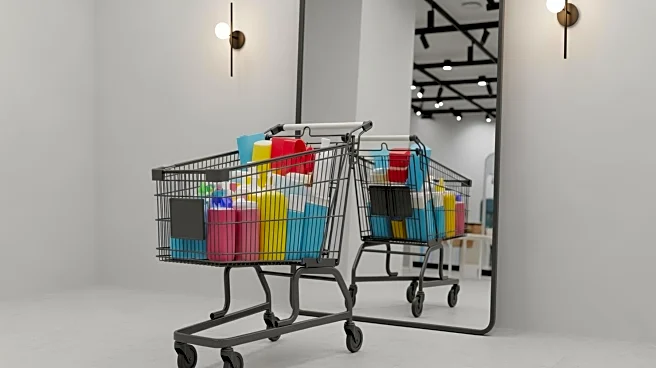What's Happening?
Retailers in the United States are facing challenges in effectively implementing self-checkout systems, despite a growing consumer preference for these automated options. According to recent data, 77%
of customers prefer self-checkout for its speed, with 63% of Gen Z and 45% of millennial shoppers favoring this method. However, issues such as theft, shrinkage, and outdated technology have led some retailers, like Walmart, to reduce or remove self-checkout kiosks in certain locations. The retail industry is at a crossroads, needing to modernize technology and operating models to capitalize on the potential of self-checkout systems. Despite setbacks, the global self-checkout systems market is projected to grow significantly, indicating a continued opportunity for retailers to enhance customer experience through automation.
Why It's Important?
The shift towards self-checkout systems represents a significant change in the retail industry, driven by consumer demand for faster and more efficient shopping experiences. This trend has implications for labor dynamics, as automation could reduce the need for human cashiers, potentially impacting employment in the sector. Additionally, successful implementation of self-checkout systems could lead to increased profitability for retailers by reducing labor costs and improving customer satisfaction. However, the challenges of theft and system errors highlight the need for improved technology and security measures. As retailers navigate these issues, the future of self-checkout systems will likely influence broader trends in retail automation and consumer behavior.
What's Next?
Retailers are expected to invest in modernizing their self-checkout systems, incorporating advanced AI-powered vision systems and 2D bar codes to enhance security and efficiency. This technological upgrade aims to address current challenges and improve the overall shopping experience. Additionally, retailers may shift staffing strategies to focus on support-based roles that assist customers and prevent theft, rather than traditional cashier positions. As the market for self-checkout systems continues to grow, retailers will need to balance automation with customer service to ensure successful implementation and adoption.













